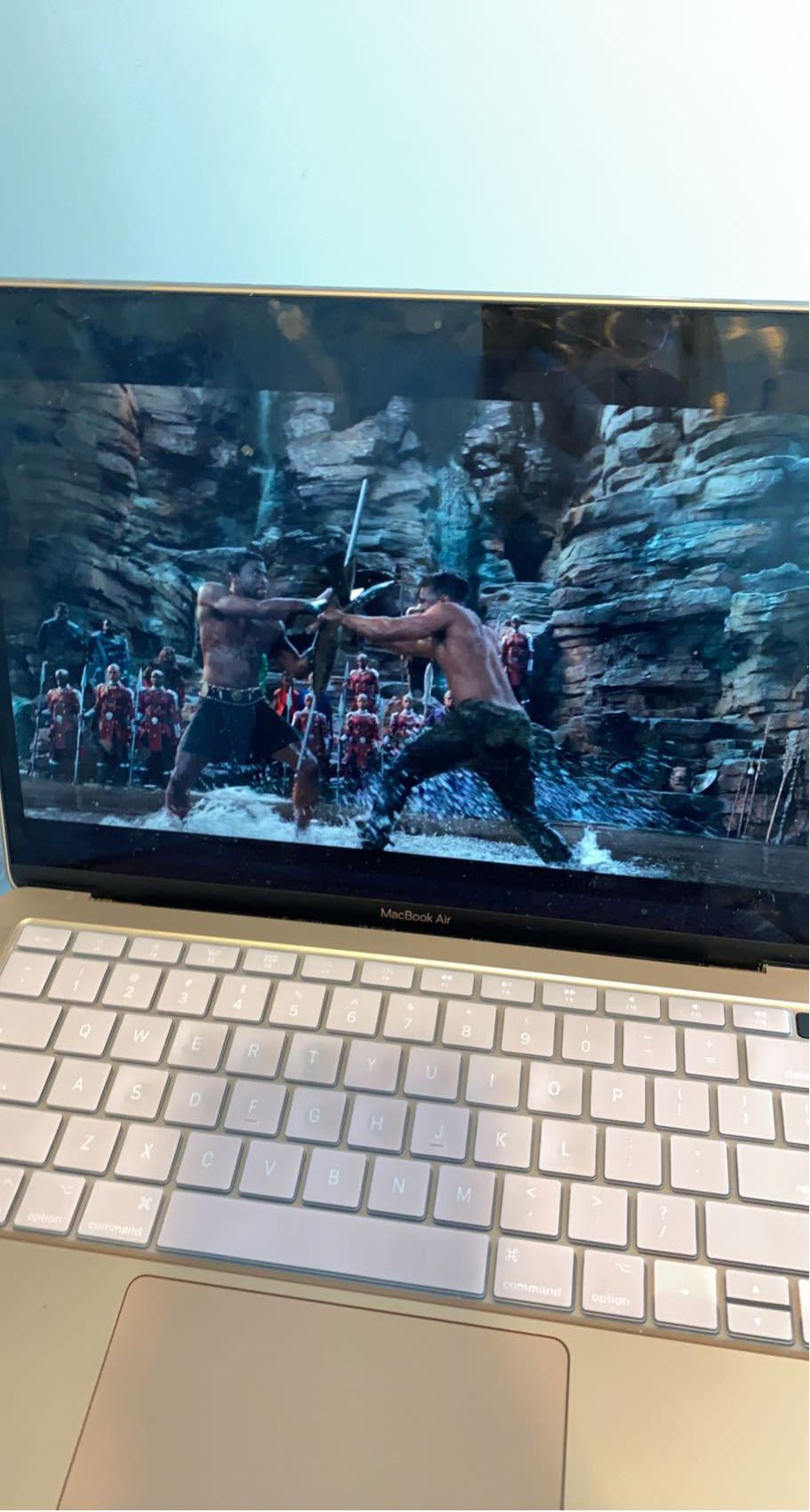I chose to write about the Marvel movie “Black Panther” because it is a rather progressed move. While I watched the movie again with the aspects of Mise En Scene in mind, I noticed quite a lot more important parts within the film. In the fight scene I’m analyzing, I noticed the angle of the camera was lower to the ground, making the effects of the violence “louder” and more extreme. I also noticed how the ecology of the scene had dull, grey undertones to it, and it wasn’t a bright scene, which brought more seriousness to the violence of the scene. Within the aggression of the scene, you would presume there would be blood within the violence, but there isn’t and when one of the characters almost died, it was from being pushed off a cliff. The sounds, colours, tones, and brightness all still gave us the same effect as if there was blood within the fight. When you typically watch a superhero vs villain fight, one usually has the upper hand within the dual, but in these scene, Black Panther and Erik, the villain both have the same physical abilities, and the fight has an even playing field.
Black Panther was undeniably an amazing movie, which makes sense to how they made $1,346,913,161 worldwide and $1.344 billion USD box office. Any movie with a big viewing might have some consequences. At the right maturity levels, we can watch action movies without the violence affecting us, but one consequence that may be pulled from it is that it doesn’t represent Africa 100% correctly. Besides that, Black Panther portrayed black culture insanely well and is very known for it. My first source referenced discusses how race was represented very accurately because Black Panther was, well, black. In old times, Marvel most likely would have casted a white actor to play the part. The main character, also called T’Challa, held a sense of pride with his African heritage, and in mostly American, African Americans hold a sense of pride after overcoming oppression and racism. Therefore, T’Challa being unapologetically proud of his African heritage allows for other POC to connect with the movie on another level. In my second source, they inform us of how women in the film are very powerful and are leaders, but it does not pass the “Bechdel test”. The female characters don’t have fully developed plots or stories and those who are fully developed, have relation to men. The main female character, Shuri, does have quite a bit of power within the movie and she is a role model to other African women.
https://www.psychologytoday.com/ca/blog/between-the-lines/201802/the-racial-politics-black-panther
